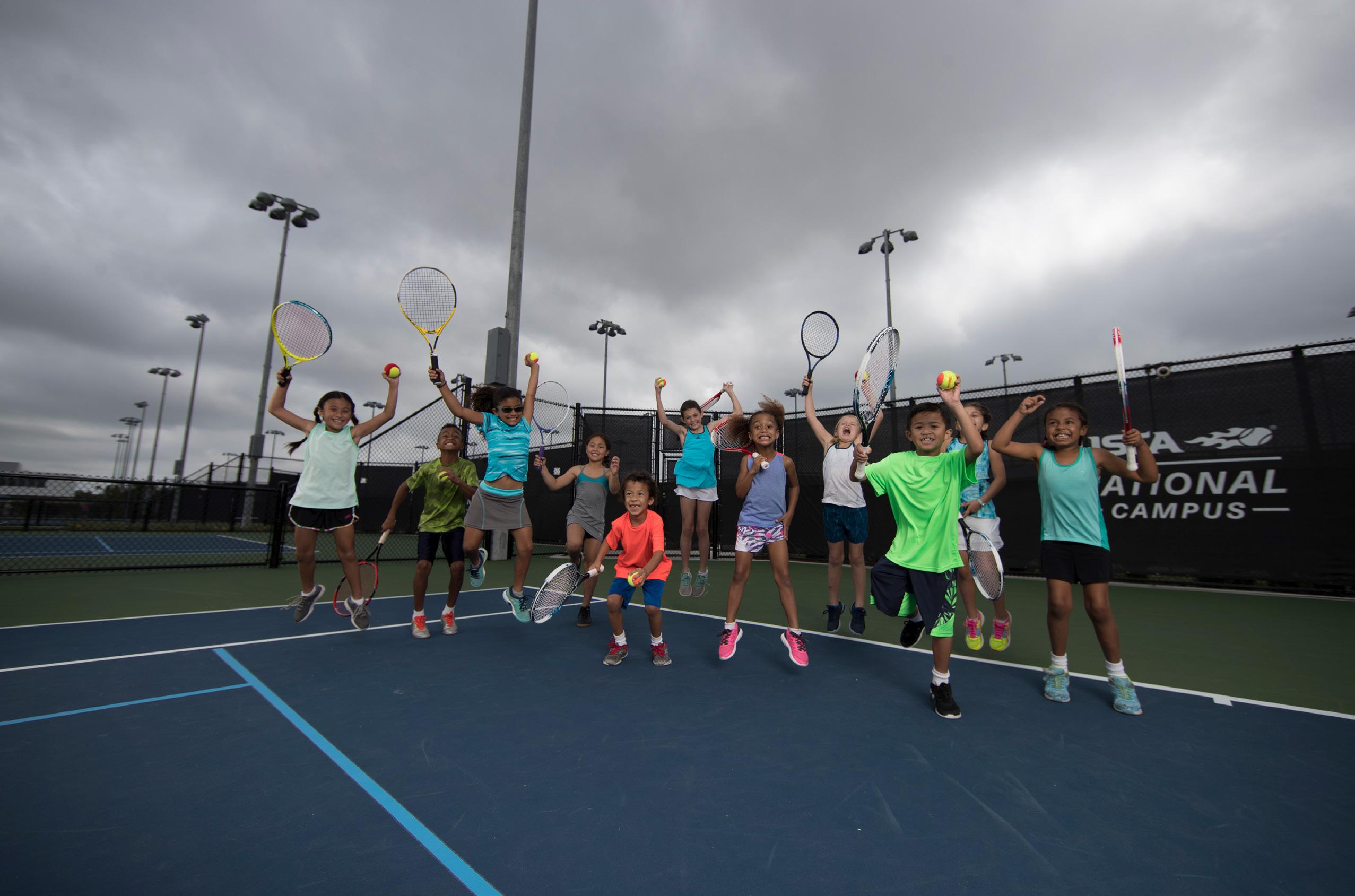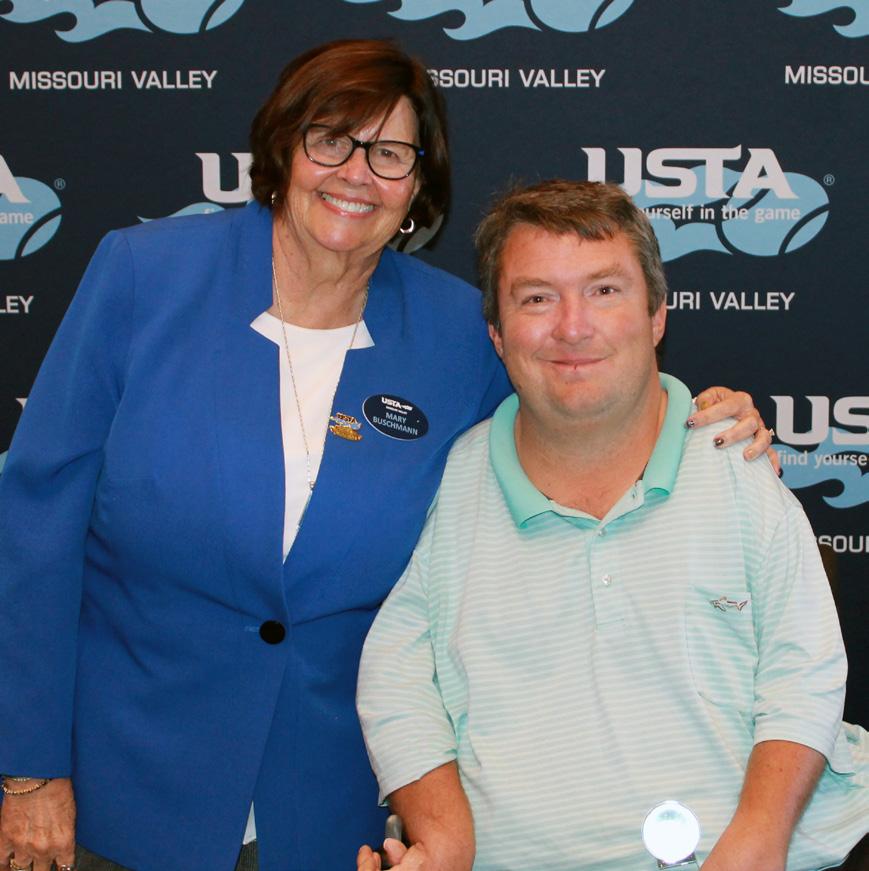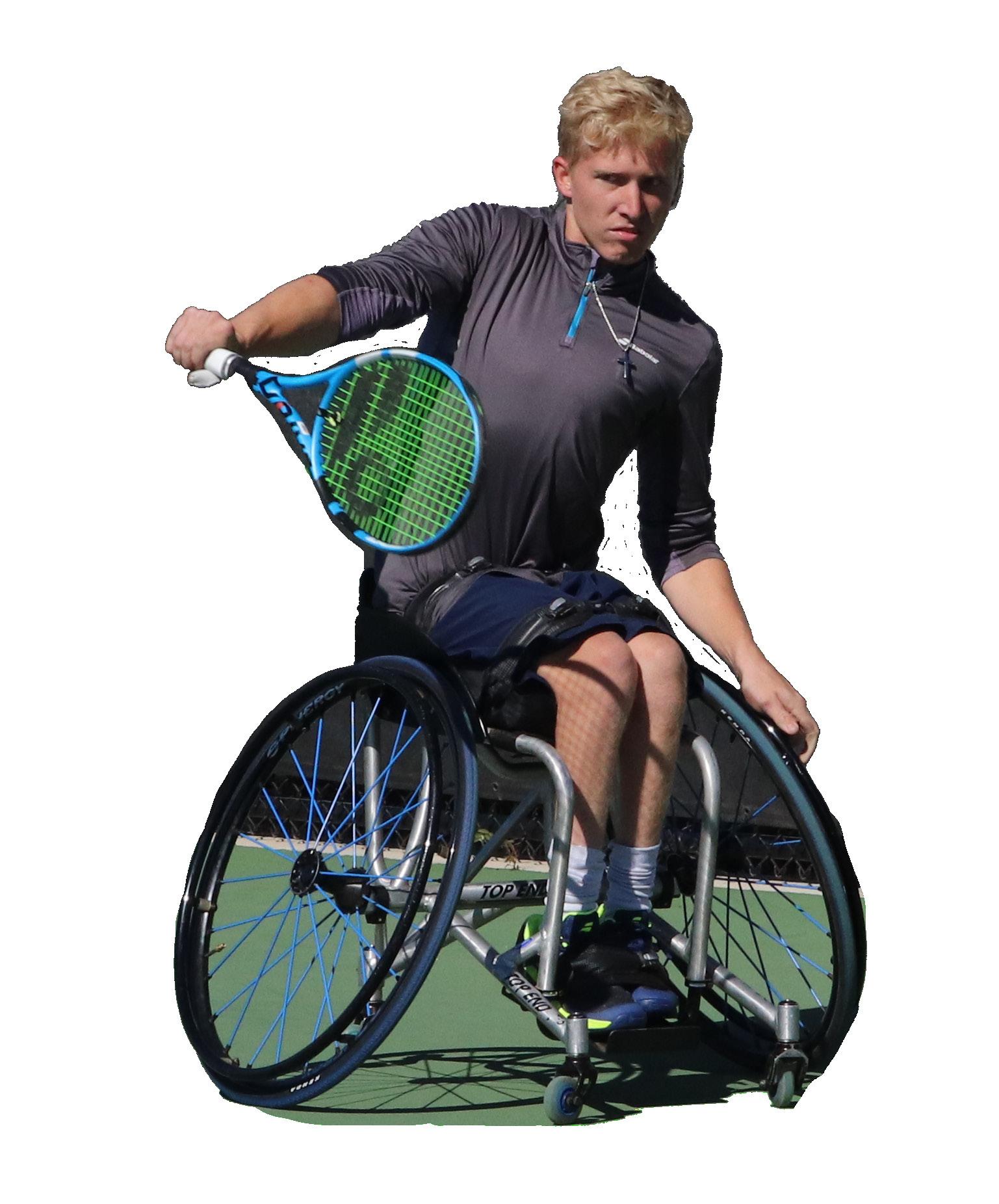
5 minute read
Bring it On
By Jamie Hansen
Tennis is still sometimes viewed as a “country club sport.” It’s a perception the USTA has worked hard to change. USTA Missouri Valley has also worked to make tennis more accessible to those who may have never considered picking up a racquet.
But there is so much more work to be done.
Tennis has certainly seen a rise in popularity since players like the Williams sisters and more recently, Madison Keys and Sloane Stephens burst onto the scene. There are many ways tennis can reach out to the community to find the next star - or get youth to play beyond the junior level.
Jaren Glaser, Tennis Service Representative of USTA Kansas and staff liaison to the Community Outreach Committee for USTA Missouri Valley, said bringing programs to youth in under-resourced communities is just one part of making tennis more inclusive.
“We must find a way to be more invitingl to all and continue to shape our offerings to fit the multi-faceted needs and wants of our potential consumers,” she said. Tennis should be about creating community. Tennis has the opportunity to bring together so many different types of people who can help build diverse communities, which is important to not only the sport of tennis but to society as a whole. Bringing people together through a shared love of tennis helps to emphasize our similarities instead of remaining siloed in our differences.”
For Alex Lee, Secretary/Treasurer of the USTA Missouri Valley Foundation and President of McAdams NJTL (National Junior Tennis & Learning) in Wichita, Kan., helping juniors see there is opportunity to play tennis after completing high school is one way to help bridge the gap. Lee is also a member of the USTA Collegiate Pathway Committee.
Glaser and Nick Taylor, members of the USTA Missouri Valley Community Outreach Committee agree.

Nick Taylor, with USTA Missouri Valley Executive Director Mary Buschmann, was honored with the section’s Distinguished Service award in 2019.
Taylor is a gold medal tennis Paralympian who has worked to bring tennis to diverse populations in Kansas, including wheelchair tennis. He said sports like basketball and football are often viewed as more accessible and considerably less expensive - and hence, yield more play opportunities for youth. Continuing work to change this perception, Taylor said, is one way to bring more people to tennis.
“We need to work to continue to lower the perceived barriers of entry for people to be involved in tennis, especially from diverse backgrounds.” Taylor said.
Bringing the game to community centers and introducing kids to opportunities like Junior Team Tennis (JTT) can provide that exposure. But it can start even earlier than that - finding ways to show parents and kids how to begin with the Net Generation Pathway - can bridge the gap even further.

Jaren Glaser (peach shirt) and Alex Lee (red shirt) with volunteers at a Net Generation Kids Day during the Wichita Tennis Open in 2019.
“Junior Team Tennis has brought in a great group of kids to the fold from all different schools and backgrounds. The kids in the JTT leagues have become friends and formed connections with people that they might not have met otherwise thanks to the program’s model of accessibility and its inclusive culture created by coordinators,” Glaser said. “I love it for that. JTT is not club-based or cost prohibitive so it brings a lot of different kids into tennis. It builds friendships. I believe that kind of community development is hugely important.”
Lee said more inclusive programming and bringing tennis to diverse communities need to continue to be a priority.
He said the future of tennis just might depend on it.
“We are doing an okay job but, just okay. Like the commercial, just doing okay is not good enough,” Lee said. “If we don’t push hard, some other sports will, and tennis will fall behind.”
Before COVID-19, one major event bringing young, diverse populations to see tennis in the Wichita area is the Wichita Tennis Open. Glaser and Taylor, who help organize the Pro Circuit event, said youth days and inviting children to meet and have clinics during the tournament - to see professional players on the circuit firsthand - is a great opportunity for youth to see what’s possible with the sport.
Plans are underway for the tournament in 2021, but large scale events like a youth day or clinics are still up in the air due to the pandemic. In years prior, such clinics would bring nearly 400 local youth to the tournament.
But while large scale events may be the best chance for many diverse populations to learn about the game, Taylor said sometimes programming with low turnout can be a blessing in disguise.
He mentions one such event nearly 12 years ago - a wheelchair programming event - where a single interested player showed up. While organizers may have been slightly disappointed in the turnout, Taylor had a feeling about the person who did attend.
That player? Casey Ratzlaff.
“He (Ratzlaff) is now the No. 1 American wheelchair player and one of the best players in the world,” Taylor said. “Whenever you are doing diversity and inclusion events people are so focused on numbers. Don’t get me wrong, numbers

Casey Ratzlaff
are great. But the whole idea if you don’t get everyone to come out at once the effort was not worth it? Maybe quantity shouldn’t always be the focus. You just never know what will happen at that one event, it’s worth it to get Casey alone.”
Taylor said that single event turned into a huge disabled youth program in Wichita and tennis is a part of it.
Ultimately, tennis should be about ensuring more people develop a love of a game one can play for a lifetime and bringing communities together. Plus, from a business perspective, it just makes good sense - to tap into markets where there is less exposure.










